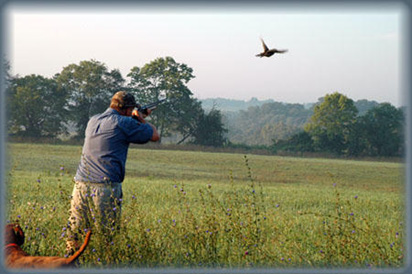

 The Accurate Reloading Forums
The Accurate Reloading Forums  THE ACCURATE RELOADING.COM FORUMS
THE ACCURATE RELOADING.COM FORUMS  Hunting
Hunting  Bird Shooting
Bird Shooting  Vintage boats from Currituck County’s glory days of duck hunting displayed in new mus
Vintage boats from Currituck County’s glory days of duck hunting displayed in new musGo  | New  | Find  | Notify  | Tools  | Reply  |  |
| one of us |
https://www.pilotonline.com/ne...kplosxztu-story.html Vintage boats from Currituck County’s glory days of duck hunting displayed in new museum By JEFF HAMPTON THE VIRGINIAN-PILOT | JUN 06, 2021 AT 1:38 PM COROLLA, N.C. — A new museum will house wooden boats that plied the Currituck Sound when world-class duck hunting and bass fishing were livelihoods for local watermen and passions for the wealthy. The 10,000 square-foot, $4.3 million facility in the shadow of the Currituck Beach Lighthouse in Corolla, is set to open next month. “It tells of a way of life that’s not around anymore,” said Currituck County native Wilson Snowden. Currituck is a Native American word meaning “Land of the wild goose.” For about a century from the mid-1800s, the Currituck Sound was renowned for duck hunting when millions of waterfowl wintered here. In the mid-20th century, the sound also was known for excellent largemouth bass fishing. The bounty created industries that served as the beginning of tourism here. Plush hunt clubs sprung up along the sound to meet the demand of wealthy industrialists who came to hunt and fish. They hired locals to guide them. Men became experts at building boats and carving decoys. Before federal law prohibited duck hunting in the early 1900s, watermen would shoot hundreds and sell them to be shipped to northern restaurants. A single canvasback duck sold for $6 in 1900, equal to $157 in today’s money, according to a museum exhibit. The Currituck Maritime Museum fulfills a dream of Snowden and the late Travis Morris, both of whom collected vintage boats for years and stored them in sheds and barns. The nearly tropical climate of eastern North Carolina took its toll even though the boats were made from hardy juniper grown in nearby swamps. Morris and Snowden lobbied county and state officials for years for a place to preserve them and tell the story of the people who built and used them. “We never thought we had a chance,” said Snowden, 78, who has hunted on the sound since he was 10 years old. In case the boats might never be saved, students from East Carolina University documented them with descriptions and architectural drawings that were stored in the Library of Congress. In 2008, Morris and Snowden won a national award for their efforts, sponsored by The History Channel. Just before Morris died four years ago, he learned the museum was likely to happen, said Chandler Sawyer, the museum’s manager. Currituck County commissioners voted to fund it three years ago using occupancy taxes charged for beach rentals and motel rooms. “I’m glad he knew this was in the works,” said Sawyer, who is Morris’ grandson and learned hunting from him. “This wouldn’t be here without him and Wilson.” Construction began two years ago. COVID-19 caused a year’s delay. Sawyer, who has a degree in hospitality, has tagged fish for the state and run the Pine Island Hunt Club for years. The museum’s focus is on a dozen boats preserved by Morris and Snowden, Sawyer said. The oldest is a flat-bottomed skiff, built more than a century ago, that could ride the shallow shorelines and fit within a narrow blind to hide from incoming ducks. The boat’s operator propelled it by sticking a long pole into the bottom of the sound and shoving. It was hard work poling a boat loaded with decoys. “That one was built before they had boat motors,” Sawyer said. The boat’s last owner was the late Earl Slick, developer of the Pine Island subdivision in Currituck on the Outer Banks. Its builder was a game warden once charged with murder for killing a man believed to be poaching ducks in the private marshes of the Pine Island Hunt Club. He was acquitted and the case was never solved. The largest on exhibit is a 33-foot-long vessel owned by the late Ambrose “Hambone” Twiford. He was a large, square-jawed man with massive, work-worn hands accustomed to pulling nets, lifting boat motors and carrying shotguns. An enlarged photograph of Twiford on the museum wall shows him holding a string of freshly caught largemouth bass. One display shows Martha Kay Helms, a cook at one of the hunt clubs, accompanied by her recipe for sweet potato biscuits, a staple of the large meals prepared for hunters. Another panel highlights Joseph P. Knapp, one of the industrialists who came here to hunt. He learned to love the people and location, and locals returned the affection. He donated thousands of dollars to local causes including the fledgling school system. One of the county’s schools and a bridge is named for him. Knapp owned and managed a duck preservation area on Knotts Island that eventually grew to become Ducks Unlimited, a national organization that preserves waterfowl breeding grounds in the northern U.S. and Canada. Much of Knotts Island is a national wildlife refuge that preserves habitat for the Currituck Sound waterfowl. Jeff Hampton, 757-446-2090, jeff.hampton@pilotonline.com Kathi kathi@wildtravel.net 708-425-3552 "The world is a book, and those who do not travel read only one page." | ||
|
| Powered by Social Strata |
| Please Wait. Your request is being processed... |
|
 The Accurate Reloading Forums
The Accurate Reloading Forums  THE ACCURATE RELOADING.COM FORUMS
THE ACCURATE RELOADING.COM FORUMS  Hunting
Hunting  Bird Shooting
Bird Shooting  Vintage boats from Currituck County’s glory days of duck hunting displayed in new mus
Vintage boats from Currituck County’s glory days of duck hunting displayed in new mus

Visit our on-line store for AR Memorabilia

